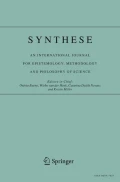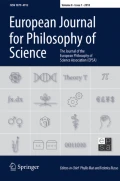Publicaciones
"Networks of queer reproduction in Sappho magazine (1972-1981)"
Nuevo artículo de la Dra. Rebecca Close (Becaria postdoctoral Marie S. Curie -programa Dorothy-, investigadora visitante en el iHC) en el volumen 34-1, de Journal of Gender Studies.
El artículo se ha publicado en Taylor&Francis online en acceso abierto, y puede consultarse aquí.
Urban Narratives about Nature. Socio-Ecological Imaginaries between Science and Entertainment
Libro del Dr. Carlos Tabernero (profesor de la UAB y director de l'iHC) como editor, en Lexington Books.

RESUM
When more than half of the Earth population lives in cities, and living conditions worldwide suffer from a steady increase in environmental issues, historical inquiry provides useful reflections and new perspectives on the present. Urban Narratives about Nature: Socio-Ecological Imaginaries between Science and Entertainment aims at generating specific historical knowledge concerning processes of production, circulation, and management of natural history narratives and the associated struggles for meaning within the socio-ecological relations involved. The city is a powerful storyteller, and this book, upon a relational perspective, provides a diverse and interrelated collection of case studies of urban-based production and circulation of narratives about nature. Altogether, these cases probe the complex relationships among scientific authority, public awareness, policymaking, corporate and political interests, and environmental advocacy, in effect expanding the interdisciplinary linking of urban and environmental history within a global history view.
CONTENIDO
Acknowledgments
Introduction: Narrating Nature from the City
Part I: Between Academia and Activism
Chapter 1: Miquel Crusafont and Sabadell: Narratives about Paleontology (Spain, 1950‒1973)
Chapter 2: Environmentalism in Transition
Part II: Between Knowledge and Entertainment
Chapter 3: Wild at Heart: Zoological Gardens and the Urban Space
Chapter 4: Mass Media and Urban Animals in History: The View from Interwar Britain
Chapter 5: Teaching and Tinkering with Personal Computers in Catalan Rural Schools and Summer Camps (Spain, 1980s‒1990s)
Part III: Between Film and Literature
Chapter 6: The Countryside in the Frame: Film Representations of Nature under Franco’s Dictatorship
Chapter 7: Hunting Narratives in Twentieth-Century Spain: The Case of Miquel Delibes
Chapter 8: From El Modena to Terminator: Imagining Green Utopian Places for the Anthropocene
Part IV: Between Natural History and Television
Chapter 9: Percy Smith: The Triple Liminality of an Urban Natural History Filmmaker in Interwar Britain
Chapter 10: The Granada TV and Film Unit at the London Zoo: “Creating Adequate Opportunity for Observing Patterns for Amateur and Professional Zoologists Alike”
Chapter 11: Televising Nature as Modernization: El Hombre y la Tierra (Man and the Earth, 1974‒1981) in 1970s Spain
Afterword: City of Silence, City of Stories: Or of Ghosts, Doors, and Subversion
About the Contributors
ISBN: 978-1-66695-060-1 (paper) | 978-1-66695-061-8 (ebook)
'Liquid assets': Coastal wetlands, regional parks, and the protection of Mediterranean deltas
Artículo del Dr. Santiago Gorostiza (investigador postdoctoral CLIMASAT del iHC) en el volumen 3 (4), de Coastal Studies & Society.
El artículo se ha publicado online en aceso abierto y puede consultarse aquí

RESUMEN
After a century of accelerating drainage, in the 1960s coastal wetlands became the object of unprecedented protection campaigns around the world. This paper compares the history of three successful cases of coastal wetland protection in the Mediterranean between the 1960s and 1980s: the Rhône (France), Po (Italy), and Ebro (Spain) River deltas. As most of the coast of Mediterranean Europe, these three cases were at the centre of renewed redevelopment attempts, to further expand intensive agriculture, industry, and seaside tourism, which invariably involved wetlands drainage. In these three cases, protection was achieved by establishing “regional parks” in the deltas. We argue that it was not by chance. Wetland advocates at the international, national, and local scales coated their plea for protection in the language of economics, making the case for wetlands’ value as “liquid assets.” They argued that wetland protection could rhyme with development and, abandoning initial projects to protect deltas as national parks, focused their efforts on creating regional parks instead. Stemming from the European regional planning movement, the regional park framework proved expedient to combine development expectations and wetland protection. Thanks to modular land use zoning, it promised to combine productive activities with protected areas, without imposing uniform restrictions on the entire deltas such as those often associated with national parks. The history of these three coastal parks, therefore, sheds light on the counterintuitive but strong relationship existing between coastal development and protection by uncovering the discursive strategies and unlikely coalitions that made conservation possible.
Para citar este artículo:
Gorostiza, S., Parrinello, G., & Aguettaz-Vilchez, D. (2024). “Liquid assets”: Coastal wetlands, regional parks, and the protection of Mediterranean deltas. Coastal Studies & Society, 3(4), 181-202. https://doi.org/10.1177/26349817241282720
"The Collective Responsibilities of Science: Toward a Normative Framework"
Article del Dr. Vincenzo Politi (Becari postdoctoral Beatriu de Pinós de l'iHC) al volum 91, de Philosophy of Science.
L'article ha estat publicat a Cambridge University Press en accés obert, que es pot llegir aquí.

"Kuhnian Lessons for the Social Epistemology of Science"
Artículo del Dr. Vincenzo Politi (Becario postdoctoral Beatriu de Pinós del iHC) en el volumen 345, de Boston Studies in the Philosophy and History of Science, p. 31-49.
El artículo se ha publicado en Springer Link.

Resumen
Kuhn’s analysis of the structure and function of the scientific community has been recently re-interpreted as a seminal contribution to the so-called social epistemology of science. Kuhn’s social epistemology should be considered as part of a normative-descriptive philosophical framework in which epistemological, historical, sociological, and psychological elements are interconnected. In this chapter, I will compare Kuhn’s seminal insights with two contemporary approaches to the social epistemology of science, namely: the development of idealised formal models of the scientific community and the use of qualitative studies for philosophical purposes. On the one hand, these contemporary approaches to social epistemology may be regarded as developing some of Kuhn’s views in new and exciting ways. On the other hand, however, it is still not entirely clear which kind of general philosophical ‘image of science’ they are contributing to. This chapter, therefore, aims at illuminating how analysing some of the contemporary debates in social epistemology through the lenses of Kuhn’s philosophy may recast under a new light the issue of the value of the study of the social dimension of scientific research for general philosophy of science.
Para citar este artículo:
Politi, V. (2024). Kuhnian Lessons for the Social Epistemology of Science. In: Shan, Y. (eds) Rethinking Thomas Kuhn’s Legacy. Boston Studies in the Philosophy and History of Science, vol 345. Springer, Cham. https://doi.org/10.1007/978-3-031-64229-6_3
DOI: https://doi.org/10.1007/978-3-031-64229-6_3
Resistance: A Journal of Radical Environmental Humanities
- Volume 11, Number 1, Winter 2023, From Resilience to Resistance: An Almost New Journal for Environmental Humanities.
Editor-in-chief: Dr. Marco Armiero

Resistance: A Journal of Radical Environmental Humanities, From Resilience to Resistance: An Almost New Journal for Environmental Humanities, Volume 11, Number 1, Winter 2023, we can find several articles of iHC members in a collective editorial:
-From Resilience to Resistance: An Almost New Journal for Environmental Humanities
Marco Armiero, pp. 1-4, DOI: https://doi.org/10.1353/res.2023.a931662
-The Dark Side of the White Alps: Guerrilla Narratives in the Marble Landscape of Tuscany
Chiara Braucher, Marco Armiero, pp. 105-123, DOI: https://doi.org/10.1353/res.2023.a931668
-Living a Lie: Leave the World Behind by Sam Esmail (review)
Carlos Tabernero, pp. 158-163, DOI: https://doi.org/10.1353/res.2023.a931670
Resilience: A Journal of Environmental Humanities is entering a new phase in its evolution. Under the leadership of the new editor-in-chief, Marco Armiero, the journal is undergoing a significant transformation and will now be known as Resistance: A Journal of Radical Environmental Humanities. This change in title is designed to provide clarity about the journal’s intellectual direction in its new series. While ‘resilience’ pertains to the ability to endure stressors and return to a prior state, ‘resistance’ is about taking action to challenge and change the conditions that lead to crises. As activists emphasized during the COVID-19 pandemic, the goal should not be a return to ‘normality,’ as ‘normality’ itself was part of the problem (Nebraska Press Journals, University of Nebraska).
ISSN: 2996-4849
"The Fertility Fix: the Boom in Facial-matching Algorithms for Donor Selection in Assisted Reproduction in Spain"
Nuevo artículo de la Dra. Rebecca Close (Becaria postdoctoral MSCA Dorothy, actualmente realizando una estancia de investigación en el iHC) en el volumen 30, de The New Bioethics.
El artículo se ha publicado en Taylor & Francis online en aceso abierto, que puede consultarse aquí.
RESUMEN
This article reads the uptake of facial-matching algorithms by fertility clinics in Spain through the lens of ‘the fertility fix’: a software fix to the social reconfiguration of kinship and a fixed capital investment made by competing fertility companies and firms. ‘The fertility fix’ is proposed as a critical, ethical lens through which to situate algorithmic facial-matching in assisted reproduction in the context of the racial politics of the face and phenotype and the spatial politics of market expansion. While an ‘infertility crisis’ is often mentioned when explaining the growth of the assisted reproductive technologies (ARTs) industry, the use of donated reproductive cells is tied up in societal, ecological and economic shifts. Combining Software Studies analysis with Marxist Feminist and trans*feminist perspectives on shifting re/production dynamics, the article details the role of computational technologies in promoting certain ideas and beliefs about family and fixing certain territories of capital flow.
Para citar este artículo:
Close, R. (2024). The Fertility Fix: the Boom in Facial-matching Algorithms for Donor Selection in Assisted Reproduction in Spain. The New Bioethics, 1–17. https://doi.org/10.1080/20502877.2024.2371738
"The value-free ideal, the autonomy thesis, and cognitive diversity"
Nuevo artículo del Dr. Vincenzo Politi (Becario postdoctoral Beatriu de Pinós del iHC) en el volumen 204, de Synthese.
El artículo se ha publicado en Springer Link en aceso abierto, que puede consultarse aquí.
RESUMEN
Some debates about the role of non-epistemic values in science discuss the so-called Value-Free Ideal together with the autonomy thesis, to the point that they may be assumed to be intertwined. As I will argue in this article, the two are independent from one another, are supported by different arguments, and ought to be disentangled. I will also show that the arguments against value-freedom and supporting a value-laden conception of science, are different from the arguments against autonomy, which support democratized science. Moreover, while some of the arguments against autonomy and for democratized science may actually be consistent with value-freedom, they conflict with some philosophical views about the internal diversity of well-designed epistemic communities. This article distinguishes the Value-Free Ideal and the autonomy thesis, as well as their antitheses, and investigates their relations to some of the socio-epistemological models of the social organization of scientific research. Its aim is to make explicit some incompatibilities between different normative frameworks developed in philosophy of science.
Para citarlo:
Politi, V. “The value-free ideal, the autonomy thesis, and cognitive diversity”. Synthese 204, 24 (2024). https://doi.org/10.1007/s11229-024-04673-1
DOI: https://doi.org/10.1007/s11229-024-04673-1
Artículo de Marià Baig, Miembro afiliado al iHC y Doctor en Ciencias Físicas por la UAB.
Artículo complet consultable en RACO: https://raco.cat/index.php/AnnalsEmpordanesos/article/view/423730/518267
Publicado por Institut d'Estudis Empordanesos
DOI: https://doi.org/10.34810/20.8010.01.328
Para citar este artículo: Annals de l’Institut d’Estudis Empordanesos (AIEE), Figueres, vol. 54 (2023), pàg. 215-242
"Who ought to look towards the horizon? A qualitative study on the collective social responsibility of scientific research"
Nuevo artículo del Dr. Vincenzo Politi (Becario postdoctoral Beatriu de Pinós del iHC) en el volumen 14, del European Journal for Philosophy of Science.
El artículo se ha publicado en Springer Link en aceso abierto, que puede consultarse aquí.
RESUMEN
There is a growing concern for the proper role of science within democratic societies, which has led to the development of new science policies for the implementation of social responsibility in research. Although the very expression ‘social responsibility of science’ may be interpreted in different ways, many of these emerging policy frameworks define it, at least in part, as a form of anticipative reflection about the potential impacts of research in society. What remains a rather under-discussed issue is the definition of the bearer of the social responsibility of science. In other words, it is not clear who is supposed to engage in such an anticipative reflection, whether individual researchers or research groups. In the past few years, philosophers of science have begun to use qualitative research methods to fill the gaps between normative models of the organisation of ideal scientific communities and the reality of actual scientific practices. In this article, I follow this approach to discuss the issue of the collective dimension of the social responsibility of science. I rely on a qualitative study conducted on an interdisciplinary research group and I describe how group dynamics position individuals and distribute duties and roles, including social responsibility. Qualitative descriptions of the distribution of duties within actual research groups should inform the formulation of general prescriptive theories on the collective responsibility of science.
Para citarlo:
Politi, V. Who ought to look towards the horizon? A qualitative study on the collective social responsibility of scientific research. Euro Jnl Phil Sci 14, 19 (2024). https://doi.org/10.1007/s13194-024-00580-x
The Land of the Hunger Artists. Science, Spectacle and Authority, c. 1880-1922.
Libro d'Agustí Nieto-Galán, director del iHC y profesor de la UAB.
Publicado por Cambridge University Press
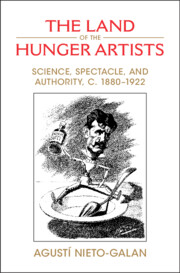
Book description
From the 1880s to the 1920s, hunger artists - professional fasters - lived on the fringes of public spectacle and academic experiment. Agustí Nieto-Galan presents the history of this phenomenon as popular urban spectacle and subject of scientific study, showing how hunger artists acted as mediators between the human and the social body. Doctors, journalists, impresarios , artists, and others used them to reinforce their different philosophical views, scientific schools, political ideologies, cultural values, and professional interests. The hunger artists generated heated debates on objectivity and medical pluralism, and fierce struggles over authority, recognition, and prestige. Set on the fringes of the freak show culture of the nineteenth century and the scientific study of physiology laboratories, Nieto-Galan explores the story of the public exhibition of hunger, emaciated bodies, and their enormous impact on the public sphere of their time.
Els càtars: 50 indrets del catarisme occitanocatalà
Autor: Sergi Grau, miembro del iHC y profesor asociado de la UAB.
Publicado por Editorial Cossetània

RESUMEN
El libro Els càtars: 50 indrets del catarisme occitanocatalà, publicado por Sergi Grau, es una guia peculiar en la que se explican algunas historias vividas por los cátaros en diferentes puntos de Catalunya y Occitánia.
Se trata de una aproximación diferente a los sitios cátaros. El turismo ha potenciado el Camí dels Bons Homes, un itinerario turístico transpirenaico que ha dado a conocer los lugares más emblemáticos de los cátaros en las comarcas del Alt Urgell, el Berguedà, el Solsonès y la Cerdanya, junto con los famosos —y mal llamados castillos «cátaros» occitanos. Pero, en el territorio, hay otras muchas ciudades y villas que también tienen su historia con los cátaros, ciudades que se extienden de norte a sur y que llegan hasta Valencia, Aragón o Mallorca. Y éstas son las historias que se cuentan. Su testimonio nos acerca de una forma u otra al paso de estos hombres y mujeres que creyeron en el catarismo por una villa, una calle, una plaza o una iglesia de estos 50 lugares del territorio occitanocatalán.
ISBN: 978-84-1356-306-0 (paper, tapa dura)
Beyond Structure: New Frontiers of the Philosophy of Thomas Kuhn
Artículo editorial del Dr. Vincenzo Politi (Becario postdoctoral Beatriu de Pinós del iHC) y Yafeng Shan en el volumen especial del journal "International Studies in the Philosophy of Science" que han co-editado.
El artículo se ha publicado en Taylor & Francis online y se puede consultar aquí: https://www.tandfonline.com/doi/full/10.1080/02698595.2023.2264158
RESUMEN
Thomas Kuhn (1922-1996) is widely considered as one of the most important philosophers of science of the 20th century, while his The Structure of Scientific Revolutions (SSR) is regarded as one of the most influential works in the philosophy ofscience. At the same time, however, his place within philosophy of science remains ambiguous. On the one hand, despite the popularity of SSR, there is no proper ‘Kuhnian school of thought’ in HPS. On the other hand, the interest towards Kuhn does not seem to fade away and the number of publications about his work does not seem to decrease. We suggest that there are at least three different ways to go ‘beyond SSR’: (i) by scrutinising the development of Kuhn’s thought, from his pre- to his post-SSR writings; (ii) by contextualising Kuhn in the philosophical milieu of his time, thus interpreting his view as emerging from the intellectual exchanges he had with contemporary philosophers; (iii) by reinterpreting and developing some of his most known ideas, in ways that perhaps Kuhn himself was not able to contemplate.
Ciudad Pánico. Morfologías urbanas del horror
Coordinat per Ángel Sala y Jordi Sánchez-Navarro, el llibre comta amb la participació de Carlos Tabernero, membre de l'iHC i professor de la UAB. Il·lustracions: Miki Edge
Llibre oficial de SITGES / Festival Internacional de Cinema Fantàstic de Catalunya
ISBN: 978-84-126027-5-3
Publicat per Editorial Hermenaute

Abstract
¿Qué tienen en común la onírica Venecia, la ciudad de la muerte, con Los Ángeles, la ciudad de los sueños? ¿La «culta» Nueva York con la «industriosa» Detroit? ¿Un suburbio de Estados Unidos con el centro de Roma? Todos ellos son escenarios del miedo contemporáneo. Cartografías del terror que toman forma de ciudad. Laberintos para las ansiedades de nuestro tiempo. Coordinado por Ángel Sala y Jordi Sánchez-Navarro. Libro oficial de SITGES ? Festival Internacional de Cinema Fantàstic de Catalunya.
Las ciudades se reflejan en el género como centros densos de actividad humana, albergan tanto sueños como pesadillas y brindan un terreno fértil para que los cineastas exploren emociones que solo tienen sentido en el marco de la vida urbana. En esos enfoques, el aislamiento y la alienación se convierten en temas centrales.
Table of contents
-Jordi Sánchez-Navarro habla en el primer capítulo de la representación de algunas ciudades italianas legendarias en el cine de terror y su relación con el concepto de lo sublime terrorífico.
-Jorge Gorostiza analiza, a través de los nombres y la morfología urbana, como funcionan las urbes imaginadas y los pueblos inventados en las ficciones cinematográficas.
-Los guetos y los suburbios residenciales son el material que ha tratado Victoria Santamaría Ibor en su capítulo.
-Símbolo del colapso del siglo XX, Detroit es el escenario predilecto del terror contemporáneo que analiza Lluís Rueda.
-Ángel Sala nos propone recorrer los mil y un horrores de la ciudad total, las grandes megalópolis urbanas de la modernidad.
-Antonio José Navarro nos acompaña en una muy especial cartografía española del miedo urbano.
-Carlos Tabernero pone el foco en la representación de las ciudades abandonadas.
-El volumen se cierra con una selección de películas brevemente comentadas por Xavi Sánchez Pons y Ángel Sala.
-Con motivo del festival de Sitges, ponemos a disposición de forma gratuita una versión extendida del artículo de Ángel Sala en este enlace: https://www.hermenaute.com/docs/ciudad_total.pdf.
Special Issue: Science at the Zoo: Producing Knowledge about Exotic Animals, edited by Miquel Carandell & Oliver Hochadel. Centaurus. Journal of the European Society for the History of Science, Volume 64 (2022), Issue 3.
Abstract
Was the zoo a place for science in the nineteenth and twentieth centuries? This Special Issue addresses this question with case studies that focus on individual animals such as anteaters, axolotls, dolphins, hoatzins, kangaroos, cassowaries and tarpans. The eight articles ask in how far the specific conditions of the zoo enabled but also conditioned or even impeded the generation of knowledge. And they show how closely intertwined these investigations were with issues of taxonomy, breeding, conservation and practical zoo management.
Table of contents
Oliver Hochadel: Science at the Zoo. An Introduction
Helen Cowie: A Tale of Two Anteaters: Madrid 1776 and London 1853
Christian Reiß: Knowing is surviving. The Mexican Axolotl, two Paris Zoos and the Role of Practical Knowledge in Keeping Unknown Animals, 1850-1876
Oliver Hochadel: How to get into the Pouch. Solving the riddle of the kangaroo birth (1826-1926)
Elle Larsson: "Here they are in flesh and feather": Walter Rothschild’s "private zoo" and the preparation and taxonomic study of cassowaries
Valentines-Álvarez, Jaume; Sastre-Juan, Jaume (2022), “A Fascist Coney Island? Salazar’s Dictatorship, Popular Culture and Technological Fun (1933-1940)”, in Simões, Ana; Diogo, Maria Paula (eds.), Lisbon (1880-1940): Visions and Identities of a Techno-Scientific Atlantic Capital, Leiden: Brill, 391-418.
Abstract
This chapter deals with the place of amusement parks in Lisbon’s geographies of leisure during the first decade of the Estado Novo (1933–1943). At a time in which the regime was developing its own model of fascist modernity, what form did the international, urban and mechanical fun of amusement parks take under Salazarism? By analyzing the different regimes of pleasure of the three major spaces of technological fun of the period (the Luna Parque at the Eduardo VII Park, 1933–35; the amusement park of the 1940 Exhibition of the Portuguese World in Belém; the Feira Popular created in 1943 in Palhavã) we explore the relations between global mass culture and the cultural program of the Estado Novo.
Miquel Carandell Baruzzi (2022). ‘Ugly and smelly or useful insect hunters?’ Perceptions of and attitudes towards bats in the turn of the twentieth-century public sphere in Barcelona. Public Understanding of Science, Volume 32, Issue 1
Abstract
In recent years, historians and sociologists of science have shown how turn of the century natural history research and its public communication in Barcelona was intrinsically attached to certain political orientations and the historical context. Likewise, the way society perceived bats and promoted their ecological services has been increasingly researched by the community of bat researchers. In this article, I describe attitudes towards and perceptions of bats in the ‘public sphere’ of Barcelona in that period and examine them using public communication of science and history of science analytical tools. I performed an exhaustive search of the available newspaper and magazine articles using the Catalan and Spanish words for ‘bat’ in the online search engines of the national Catalan and Spanish libraries from 1888 to 1929. I compiled and reviewed a wide range of periodicals, covering different political orientations and representing several different types of publication. The articles were classified into four different categories. First, bats were commonly used as a symbol to represent the city and right-wing, conservative politics. Second, bats were often linked to negative adjectives that portrayed them as ugly, disgusting or diabolic. Third, many articles made an active effort to stop children chasing and killing bats. And fourth, I also identified a non-organised group of popularisers across the whole media spectrum who promoted what we call today the ecological services provided by bats, and especially their role as agricultural pest controllers. This study provides a better understanding of science popularisation, and specifically, perceptions of and attitudes towards bats during the studied period. This approach illustrates how historical accounts can be used today to improve perceptions of bats and suggest a more complex context of science popularisation.
Carlos Tabernero, "The Case of the Killer She-Wolf: Media, the Natural Sciences, and the Construction of the Environment in Late Franco’s Spain". Volume 52, Issue 4 of Historical Studies in the Natural Sciences (September 2022)
Abstract:
In July 1974, a she-wolf allegedly killed two children in Ourense (Spain). A press outburst followed, with a heated debate about the extermination or conservation of wolf populations. This article examines that media coverage as a highly illustrative example of a multilayered process of natural history knowledge construction. The initial focus on the legal standing of wolves soon turned to an argument about Spain’s modernization, a central contention during Franco’s dictatorship, particularly in the last two decades. In a context of the rise of the natural sciences as a noteworthy field of sociopolitical negotiation worldwide, the scientific definition and management of natural heritage, intertwined with nationalist and internationalist rationales that were integral to the regime’s enduring legitimation strategies, quickly became central issues. In addition, Felix Rodríguez de la Fuente (1928–1980), a highly influential naturalist, media icon, and celebrity champion of wolves, whose stance of a scientifically based activism elicited mixed feelings in late Franco’s Spain, was quickly drawn into the quarrel with shepherds, hunters, scholars, policymakers, and journalists. His involvement, against a backdrop of locally situated and environmentally related conflicts, allows us to analyze the ambivalent role of science, media, and celebrity in the establishment of the epistemological status of local/rural and outsider/urban knowledge in the construction of narratives about nature. In all, this case brings together official mechanisms of production of scientific knowledge, various forms of public and institutional engagement, a wide range of people’s everyday-life experiences, and the crucial involvement of the media.
Keywords:
media, environment, Franco’s regime, human–wildlife conflicts, natural history knowledge production, rural/urban boundaries, celebrity
History of Science, Volume 60, ISSUE 3 (August 2022)
Special section: Science popularization under Franco
- Introduction: Science popularization, dictatorships, and democracies Clara Florensa and Agustí Nieto-Galan
- Struggling for survival: The popularization of Darwinism and the elite’s fight for power in Franco’s Spain (1939–1967) Clara Florensa
- A puzzling marriage? UNESCO and the Madrid Festival of Science (1955) Agustí Nieto-Galan
- Animals for the mayor: Barcelona’s zoo in the making of local policies and national narratives (1957–73) Miquel Carandell Baruzzi
Abstract
The study of science popularization in dictatorships, such as Franco’s regime, offers a useful window through which to review definitions of controversial categories such as “popular science” and the “public sphere.” It also adds a new analytical perspective to the historiography of dictatorships and their totalitarian nature. Moreover, studying science popularization in these regimes provides new tools for a critical analysis of key contemporary concepts such as nationalism, internationalism, democracy, and technocracy.
Adrián Almazán & Jaume Sastre-Juan; Tal vez no habrá paisaje después de la batalla, www.elsaltodiario.com [12/05/2022]
Abstract
Las tecnologías son moral materializada, son política por otros medios, pautan formas de vida, posibilitan e inhiben mundos. La nuclear también. Muchos críticos de la energía nuclear han apuntado no sólo a sus peligros ecológicos, sino a su nocividad social.
Agustí Nieto-Galan; La “religió” de la ciència a l’Escola Moderna. I Simposi Internacional Ferrer Guàrdia, pp.37-57.
Abstract
Presentem el document de recull de totes les comunicacions acceptades en el Simposi. En primer lloc, el text en llengua francesa de la conferència inaugural impartida pel professor Wagnon sobre el tema “La dimension européenne de Francisco Ferrer”. A continuació, les tretze comunicacions presentades i avaluades pel comitè científic que s’han estructurat en dues parts: “Els principis educatius de l’Escola Moderna” i “La presència i la influència de Ferrer i Guàrdia i l’Escola Moderna”.
Articles Simposi FG [DOWNLOAD]
Xavier Roqué; "Small agency in the nuclear anthropocene. Local Words for the Palomares Accident" in Anthropogenic Markers: Stratigraphy and Context, eds. Christoph Rosol and Giulia Rispoli (2022)
ISSN: 978-84-18982-77-4
Anthropogenic Markers: Stratigraphy and Context
The special publication Anthropogenic Markers: Stratigraphy and Context explores and contours some of the historical contexts, epistemic settings, and conceptual interventions around the ongoing work of Anthropocene geology. In seven thematic dossiers, contributions from the fields of geochemistry and paleobiology, history and science studies, artistic research, archaeology, literary studies, and anthropology reflect on selected material markers of human impacts on earthly strata. Taken together, they form a unique interdisciplinary conversation across positions and perspectives, helping to map out and expand upon the many ways of tracing the evidence that defines the onset of a human-dominated and crisis-laden epoch.
Verónica Ramírez, Elisa Sevilla, Agustín Nieto-Galan (eds), Astronomía, Literatura y espiritismo. Camille Flammarion en América Latina. RIL editores, 2022.
ISSN: 978-84-18982-77-4
Abstract
La figura del astrónomo y divulgador francés Camille Flammarion (1842-1925) tuvo un gran impacto en la cultura latinoamericana de fines del siglo XIX y principios del XX. Su obra, de carácter heterogéneo, conformada por ensayos científicos, artículos de divulgación, novelas e incluso textos espiritistas, fue apropiada por intelectuales, políticos, artistas y científicos, e impregnó debates, tertulias, impresos y efemérides, tanto entre las élites como en las clases populares. Más que una recopilación de casos nacionales, este volumen colectivo presenta algunos de los «itinerarios», hasta ahora desconocidos, que siguió el saber astronómico de Flammarion en América Latina.
"Wildlife comics, or the making of young naturalists in late Franco’s Spain (1969–1970)", Journal of Science Communication, Volume 21, February 2022. DOI: https://doi.org/10.22323/2.21010205
Download:
Abstract:
This essay examines a highly popular comic series published in Spain between 1969 and 1970 which focused on Felix Rodríguez de la Fuente (1928–1980), a prominent and influential naturalist and media icon, as main character. These comics constitute a remarkably illustrative example of the use of popular media in processes of construction of natural history knowledge. Situated in the complex final years of Franco's regime, they allow us to probe the combined role of science, media, and celebrity in the construction of a visual environmental culture through storytelling strategies designed to engage young audiences in naturalist-like practices.
Agustí Nieto-Galan, "Useful charlatans: Giovanni Succi and Stefano Merlatti’s fasting contest in Paris, 1886". Science in Context, Volume 33/ Number 4. Published online by Cambridge University Press: 28 January 2022
ISSN: 0269-8897 (Print), 1474-0664 (Online)
https://www.cambridge.org/core/journals/science-in-context/issue/7724E401D3ADC52669E147A23A031957
Argument:
This paper analyzes the public fasts of two Italian “hunger artists,” Giovanni Succi and Stefano Merlatti, in Paris in 1886, and their ability to forego eating for a long period (thirty and fifty days respectively). Some contemporary witnesses described them as clever frauds, but others considered them to be interesting physiological anomalies. Controversies about their fasts entered academic circles, but they also spread throughout the urban public at different levels. First, Succi and Merlatti steered medical debates among physicians on the “scientific” explanations of the limits of human resistance to inanition, and acted as ideal mediators for doctors’ professional interests. Second, they became useful tools for science popularizers in their attempt to gain authority in drawing the boundaries between “orthodox” and “heterodox” knowledge. Finally, in the 1880s, Succi and Merlatti’s contest, the controversy around the liquids they ingested, and their scientific supervision by medical doctors, all reinforced their own professional status as itinerant fasters in a golden decade for that kind of endeavor. For all those reasons, Succi and Merlatti can be viewed as useful, epistemologically-active charlatans.
Agustí Nieto-Galan and Peter J. Ramberg, “Culture and Science: Chemistry Spreads Its Influence”, in A Cultural History of Chemistry in the Nineteenth Century, edited by Peter J. Ramberg, Bloomsbury. London, 2021, pp. 117-138.
https://www.bloomsbury.com/uk/cultural-history-of-chemistry-9781474294928/
Description
From prehistoric metal extraction to medieval alchemy to modern industry, chemistry has been central to our understanding and use of the physical world as well as to trade, warfare and medicine. In its turn, chemistry has been shaped by changing technologies, institutions and cultural beliefs. A Cultural History of Chemistry presents the first detailed and authoritative survey from antiquity to today, focusing on the West but integrating key developments in Egypt, Mesopotamia, and the Arabic-Islamic and Byzantine empires.
Chapter titles are identical across each of the volumes. This gives the choice of reading about a specific period in one of the volumes, or following a theme across history by reading the relevant chapter in each of the six. The themes (and chapter titles) are: Theory and Concepts; Practice and Experiment; Sites and Technology; Culture and Knowledge; Society and Environment; Trade and Industry; Learning and Institutions; Art and Representation.
The six volumes cover: 1 – Antiquity (3,000 BCE to 600 CE); 2 – Medieval Age (600 to 1500); 3 – Early Modern (1500 to 1700); 4 – Eighteenth Century (1700 to 1815); 5 – Nineteenth Century (1815 to 1914); 6 – Modern Age (1914 to the Present).
The page extent for the pack is 1728pp. Each volume opens with an Introduction and concludes with Notes, Bibliography, and an Index.
Lévy, S., Huertas-Maestro, M., & Huertas, R. (2021). The reception of psychodrama in Spain: Correspondence between Jacob Levy Moreno and Ramón Sarró. History of Psychology. Advance online publication. https://doi.org/10.1037/hop0000206
Jacob Levy Moreno, the well-known creator of psychodrama, had a close epistolary relationship with the Spanish psychiatrist Ramón Sarró; a collection of these letters has been located in the Sarró personal archive, deposited in the Library of Catalonia. After locating and arranging this correspondence, we proceeded to analyze and contextualize its contents. The analysis of this collection serves as a basis to outline the context in which the relationship between Moreno and Sarró developed, the role played by certain psychotherapy congresses in strengthening their relationships, and the process that resulted in the University of Barcelona awarding Moreno Doctor Honoris Causa. This study has allowed us to identify certain areas of how psychodrama was received in Spain during the 1960s and reflect on the creation of international collaboration networks and the creation of schools and professional and academic legitimation strategies in the wake of the approaches to group psychotherapy and psychodrama that Moreno developed while based in New York. (PsycInfo Database Record (c) 2021 APA, all rights reserved).
" 'Science in Action': The Politics of Hands-on Display at the New York Museum of Science and Industry", History of Science, Volume 59 Issue 2, June 2021 [Publicado en línea el 8 de junio de 2018] e incluido en número especial 'The Spatial Inscription of Science : Politics and Practices since 1900 ', editado por Andrée Bergeron y Charlotte Bigg].
Este artículo analiza las implicaciones políticas de los cambios en los regímenes táctiles de exhibición en el New York Museum of Science and Industry, siguiendo este museo errante en su deambulación urbana por Manhattan, durante la cual cambió de promotores, narrativas y técnicas expositivas. El museo fue inaugurado en 1927 como Museum of the Peaceful Artes en los pisos séptimo y octavo del Scientific American Building. Pasó a llamarse New York Museum of Science and Industry a partir del traslado al tercer y cuarto piso del Daily News Building. Y estuvo a punto de ser rebautizado como Science Center cuando finalmente fue trasladado en 1936 a la planta baja del Rockefeller Center. El análisis de la agenda política de los diferentes promotores, y de cómo ésta se inscribía de una manera espacial y performativa en cada una de sus sedes, concluye que la proliferación de dispositivos expositivos accionados por los visitantes no fue acompañada de una retórica de participación democrática como en el caso del Exploratorium de San Francisco en la década de 1970. El paternalismo social del movimiento de promoción de la educación profesional, las ideas sobre la innovación de la primera sociología de la invención y la aproximación conductista en la comunicación de masas son contextos más adecuados en los que ubicar los cambios en la política de los regímenes de exhibición táctil de los museos norteamericanos de ciencia e industria en el período de entreguerras.
Monográfico "Cultural Histories of Science in Franco’s Spain", Culture & History Digital Journal, Vol. 10 No. 1 (2021) [https://doi.org/10.3989/chdj.2021.v10.i1]
Editorial
Introduction to the Special Issue “Cultural Histories of Science in Franco’s Spain”, Enric J. Novella, Ricardo Campos
Dossier
Constructing “Pure” and “Applied” Science in Early Francoism, Agustí Nieto-Galan
The cultural significance of physics and evolution in Francoist Spain: continuity and development in the autarchic period, Clara Florensa, Xavier Roqué
From arsenic to DDT: Pesticides, Fascism and the invisibility of toxic risks in the early years of Francoist Spain (1939-1953), Silvia Pérez-Criado, José Ramón Bertomeu Sánchez
Atomic Routes and Cultures for a New Narrative on Franco’s Regime, Ana Romero de Pablos
Racism, Hispanidad and social hierarchy in medicalpsychiatric thought during early Francoism. The work by Misael Bañuelos (1936-1941), Ricardo Campos
“The Faustian spirit of the technical world”. Mental illness and cultural criticism in Franco’s Spain, Enric J. Novella
Between modernity and tradition: the formation of a psychoanalytical culture during the Franco dictatorship, Silvia Lévy Lazcano
"La venganza de la naturaleza. 50 narrativas en torno al medio ambiente". Col·lecció: Filmografías esenciales
Vivimos en un mundo de encrucijadas medioambientales: contaminación de la tierra, el aire y el agua, sobreexplotación de recursos, emisiones desbocadas de gases de efecto invernadero, destrucción sistemática de ecosistemas y biodiversidad, y desequilibrios demográficos y socioeconómicos en el delirio del consumo desenfrenado y de nuestras reclusiones coloniales, de clase, género y raza, que inevitablemente nos enfrentan a nuestros modos de vivir y morir.
Con el cine, que nos ofrece infinitas maneras de mirarnos en nuestras comunidades, podemos explorar con peculiar libertad narrativa nuestras formas de entender la naturaleza, nuestras expectativas, nuestros recelos, las profundas contradicciones en nuestra forma de organizarnos y de construir, históricamente, el medio en el que soñamos, sufrimos y amamos.
El cine nos muestra que la venganza de la naturaleza no es más que un pretexto terrorífico, y que las soluciones de la destrucción del medio ambiente no habitan el ámbito de ningún tipo de providencia, sino de nuestra voluntad.
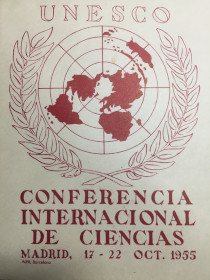
A puzzling marriage? UNESCO and the Madrid Festival of Science (1955), Clara Florensa y Agustí Nieto-Galan (eds), "Popular Science under Franco", History of Science (Febrero 2021).
Del 17 al 22 de octubre de 1955, Madrid acogió el Festival de la Ciencia de la UNESCO. En los primeros años de la Guerra Fría, en un país dictatorial que había sido recientemente admitido en la comunidad internacional, el festival tenía como objetivo difundir la ciencia entre el público a través de exhibiciones de instrumentos científicos, conferencias públicas, exhibiciones de libros, asociaciones profesionales de autores científicos y debates sobre el uso de los diferentes medios. En este contexto, los visitantes extranjeros, muchos de los cuales procedían de democracias liberales, parecían cómodos en la capital de un país gobernado por una dictadura que había sobrevivido tras la derrota del fascismo en la Segunda Guerra Mundial y luchaba por ganarse el reconocimiento exterior tras años de aislamiento.
Este artículo analiza el papel político de la divulgación científica en el Madrid de esa época. Se aproxima al matrimonio aparentemente desconcertante entre la agenda internacional de la UNESCO para la paz y la democracia y los intereses de las élites franquistas. Las visiones compartidas de la modernidad tecnocrática, la lucha contra el comunismo y una diplomacia al servicio del nacionalismo español allanaron el camino para la alianza.
El Taxidermista de la plaça Reial és una crònica, escrita per Miquel Carandell, que recull la història del comerç singular que va obrir a finals del segle XIX a la Plaça Real, un relat explicat des d’una triple perspectiva, la històrica, l’emotiva de la mà de Núria Viladevall Palaus, besneta de Soler Pujol, i la construïda amb diferents testimonis.
A la vegada, la de la botiga és una història de ciència a la ciutat, una història que ens mostra la importància dels espais com les botigues pel desenvolupament científic, especialment, per generar espais de trobada i debat entre especialistes, professionals i no professionals. Alguns d’aquest últims van ser aficionats, col·leccionistes i artistes tant coneguts com Josep Maria de Segarra, Lluís Doménech i Torres (net de Doménech i Muntanter), Josep Pons Oliveras, Salvador Dalí, Gabriel Garcia Márquez, Pere Pruna, Jorge Wagensberg o els mateixos Joan Miró i Lluís Llach que s'aturaven davant els seus aparadors.
La idea de recopilar en un llibre la llarga història del “Museo Pedagógico de Ciencias Naturales” va sorgir de, Núria Viladevall Palaus, besneta de Lluís Soler Pujol, fundador de la botiga museu. El text rememora les meves vivències a partir de les olors que es generaven amb l’activitat de l’establiment. Aquest relat es complementa amb el text de Miquel Carandell, doctor en Història de la Ciència, que explica com Soler Pujol i els seus descendents van fer d’aquesta botiga singular un referent en el món de la taxidèrmia i, alhora, un espai de difusió de la història natural, de la ciència, un punt de trobada de col•leccionistes, científics, aficionats i curiosos. A més, el llibre que volem editar compta amb el testimoni de diverses persones que van conèixer l’establiment com l’escriptor i periodista Lluís Permanyer; el poeta i escriptor Vicenç Altaió; la directora de la Fundació SETBA, Cristina Sampere, Artur Ramon ; galerista d'art, entre d’altres.
https://www.verkami.com/projects/30317-el-taxidermista-de-la-placa-reial
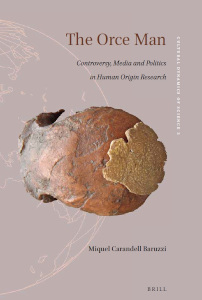
Miquel Carandell Baruzzi, profesor asociado del Institut d'Història de la Ciència, es el autor del libro The Orce Man: Controversy, Media and Politics in Human Origins Research que acaba de ser publicado por la prestigiosa editorial de investigación académica Brill. El libro, resultado de la tesis doctoral leída en el Institut (anteriorment CEHIC) en 2015 y dirigida por Oliver Hochadel, nos presenta la historia de la controversia del "Hombre de Orce".
Descubierto en 1982 en el yacimiento de Venta Micena en Orce, Granada, el "Hombre de Orce" es un pequeño fragmento de cráneo que se presentó públicamente en mayo de 1983 como un resto de un antepasado del ser humano de vital importancia. El fragmento fue considerado por sus descubridores, Josep Gibert, Jordi Agustí y Salvador Moyà-Solà, investigadores del Institut Paleontològic de Sabadell, como el homínido más antiguo de Europa, "el Primer Europeo". El descubrimiento recibió una atención mediática, política y también científica, inusitada. Después de un año, colaboradores franceses de los investigadores catalanes comenzaron a poner en duda la validez del hallazgo. Estas dudas pasaron a la prensa, donde estalló una intensa controversia que se prolongó durante casi treinta años.
En este libro, Carandell utiliza las herramientas, metodolócicas e historiograficas de la historia y la sociología de la ciencia para presentar una narrativa cronológica de la controversia de Orce, en algunas ocasiones siguiendo el desarrollo de la historia casi día a día. Esta detallada atención no pretende descubrir si el fragmento llamado "Hombre de Orce" era efectivamente un resto humana o no, sino mostrar bajo qué circunstancias, a menudo sociales, políticas o, incluso, personales, ciertas afirmaciones científicas son creíbles y aceptadas tanto por los expertos como por el público general, y otras no lo son. Situando la historia de la controversia en su contexto histórico, político, social y científico, este libro muestra cómo la línea que separa el éxito científico del fracaso es mucho más estrecha de lo que podría parecer y está íntimamente vinculada a su atención política y percepción pública.

Les transformacions d’Aristòtil. Filosofia natural i medicina a Montpeller: el cas d’Arnau de Vilanova (c. 1240-1311). 2017 Joaquim Carreras i Artau Philosophy Award from the Institut d’Estudis Catalans (Barcelona: Institut d’Estudis Catalans, 2020)
Arnau de Vilanova (c. 1240-1311), one of the most prestigious physicians in the Latin Middle Ages, is the author of an extensive oeuvre which contributed to defining medicine as a science in the scholastic sense of the word. He used the different genres of medical literature from the period, including commentaries to medical authorities, the theoretical treatise and natural philosophy, aphorisms, summations or compendia of theoretical medicine, the health system, the specialised monograph and the specific treatment targeted at a patient. His medicine falls within Galenism, which reached the Middle Ages thanks to the translations by Arab physicians. The influence of Aristotle can be felt in several of his works. The theoretical medicine treatises include a major number of references to his works, as they draw from Aristotelian natural philosophy to develop different aspects of medical theory. In this sense, Arnau de Vilanova strove to blend Aristotelian natural philosophy with medicine and establish the competences of each of these two disciplines. Thus, Arnau defined the nature of the medical discipline and its job as knowledge, that is, as an Aristotelian science that went from the principles of universal causes to move towards specific effects. This conception was in conflict with another more technical and practical way of viewing medicine, although it ended up gaining ground over time. This book analyses the influence of Aristotle on Arnau de Vilanova’s medicine and natural philosophy.
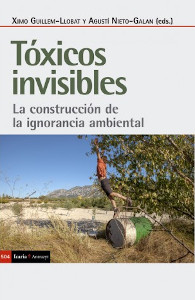
Tóxicos invisibles nos presenta un conjunto de historias poco conocidas de contaminación ambiental a lo largo del siglo xx. Nos transporta a determinados lugares, industrias, regiones, en los que la connivencia de los expertos con las administraciones públicas y las empresas privadas ha silenciado e invisibilizado a las principales víctimas de la toxicidad: trabajadores, activistas, ciudadanos en general. A través de un conjunto de investigaciones históricas rigurosas, el libro muestra cómo en estos conflictos ambientales se activan sofisticados mecanismos de construcción de la ignorancia que dificultan la correcta regulación de productos y la recuperación de espacios enfermos, degradados de manera casi irreversible.
Tóxicos invisibles es una denuncia de nuestras sociedades industriales desreguladas, complacientes con los riesgos de miles de productos sintéticos que invaden nuestras vidas, y al mismo tiempo una apelación a la responsabilidad de todos para mejorar nuestras condiciones de vida.
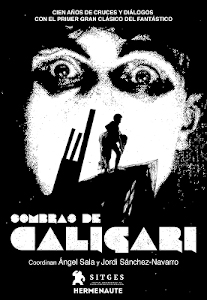
Coordinado por Ángel Sala y Jordi Sánchez-Navarro, la publicación cuenta con la partición de Carlos Tabernero, miembro del CEHIC y profesor de la UAB.
El libro se edita para celebrar el centenario de El gabinete del doctor Caligari, el primer gran clásico del cine fantástico y de terror, y explora su inmenso legado cinematográfico y cultural. El lector encontrará miradas diversas a la enorme influencia de los asuntos, la puesta en escena y los recursos narrativos de la película en el cine y la televisión posteriores, sin olvidar la génesis de Caligari, su marco sociopolítico y los debates suscitados por su interpretación a lo largo de la historia.
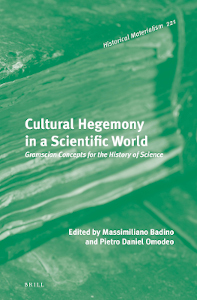
Massimiliano Badino and Pietro Daniel Omodeo (eds.), Cultural Hegemony in a Scientific World. Gramscian Concepts for the History of Science. Historical Materialism Book Series, Volume: 221, Brill, 2020.
Este volumen es el resultado de la colaboración internacional que varios miembros de la IHC establecieron después del congreso "Science as Cultural Henegomy: gramsciana Concepts for the History of Science", que tuvo lugar en Barcelona, en 2014. El libro analiza las diferentes aplicaciones de conceptos y categorías desarrolladas por pensandor italiano Antonio Gramsci al estudio histórico, sociológico, cutural de la ciencia. Conceptos como hegemonía y subalternidad nos ayudan a comprender la carga política del hecho científico desde una perspectiva crítica. Los capítulos publicado por los miembros del IHC son los siguientes:
Chapter 1 Past and Present: Revisiting ‘Gramscianism’
Autor: Agustí Nieto-Galan [pp. 19–38]
Chapter 8 Using Gramsci’s Dialogical Approach: The Struggle for Meaning in Q&A Sections of the Spanish Press in the First Third of the Twentieth Century
Autores: Isabel Jiménez-Lucena, Jorge Molero-Mesa, and Carlos Tabernero-Holgado [pp. 203–242]
Chapter 12 Philanthropy, Mass Media, and Cultural Hegemony: The Rockefeller Foundation and the Politics of Science Popularisation in the 1930s
Autor: Jaume Sastre-Juan [pp. 297–318]
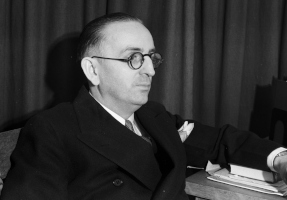
“Philanthropy, Mass Media and Cultural Hegemony: the Rockefeller Foundation and the Politics of Science Popularization in the 1930s”, en Badino, Massimiliano; Omodeo, Pietro Daniel (eds.), Cultural Hegemony in a Scientific World: Gramscian Concepts for the History of Science, Leiden, Brill, 297-318.
En 1938 i 1939, la Fundació Rockefeller va organitzar dues conferències secretes "Sobre la interpretació de la ciència per al públic en general", va encarregar un estudi exhaustiu de la divulgació científica contemporània als Estats Units i va participar activament en els esforços internacionals que en aquest camp s'estaven desenvolupant sota els auspicis de la Institut Internacional de Cooperació Intel·lectual de la Societat de Nacions amb seu a París. El capítol situa l'interès de la Fundació Rockefeller per la divulgació científica en la intersecció de les que van ser les seves dues principals preocupacions a finals de la dècada de 1930, qüestions que al seu torn van ser dos elements clau en la lluita per l'hegemonia cultural a Estats Units: la ciència i les comunicacions de masses. En aquest context el text sosté que un enfocament gramscià, que entén la popularització de la ciència com una eina en la lluita per l'hegemonia cultural, ens permet donar sentit a l'interès de la Fundació Rockefeller a la divulgació de la ciència a la fi dels anys trenta.
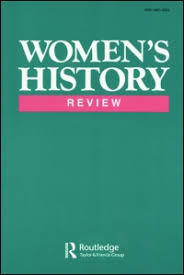
"The historical understanding of female premodern possessions. Problematizing some gender assumptions in the historiography on Teresa de Ávila and Jeanne des Anges", Women's History Review, 29:1, 2020, 125-141.
Este artículo analiza cómo abordar la historia de las posesiones femeninas en la actualidad. Al analizar algunas contribuciones recientes aplicadas a dos figuras históricas conocidas: Teresa de Ávila (1515-1582) y Jeanne des Anges (1602-1665), problematizaré la historiografía en curso sobre las posesiones femeninas. Concretamente, me propongo reflexionar sobre dos de los marcos conceptuales actuales que caracterizan la forma en que la historia explica la experiencia subjetiva de estos individuos premodernos poseídos. Me centro en dos tipos de interpretación: a una la llamo interpretación "neurótica" y a la otra la interpretación "subversiva". Ambas construcciones sustentan las explicaciones de las posesiones divinas y demoníacas de las mujeres, que involucran prejuicios historiográficos de género y suposiciones ahistóricas.
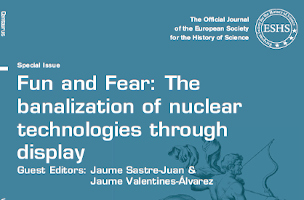
¿Cómo se consigue que las tecnologías nucleares sean parte de la cotidianidad? ¿Cómo se han dibujado y re-dibujado a lo largo de los últimos setenta años las fronteras entre aquello excepcional y aquello banal en relación en las tecnologías nucleares?
Éstas son algunas de las preguntas que se plantea ‘Fun and Fear: The Banalization of Nuclear Technologies through Display’, un número especial co-editado por el miembro del CEHIC Jaume Sastre-Juan que ha sido publicado recientemente en la revista Centaurus.
La traducció de les Obras completas de Freud per Luis López Ballesteros en 1922 va col·locar les idees freudianes en el punt de mira dels especialistes espanyols. Sobre la resistència i el rebuig amb les quals van ser rebudes existeixen nombrosos estudis, i precisament Psicoanálisis y defensa social en España, 1923-1959 ve a completar aquesta visió. Mostra l'altra cara: a través de les diferents dimensions de la vida de l'individu i de la societat a les quals es va aplicar la psicoanàlisi, dóna compte de l'èxit de la seva expansió, de les reinterpretacions i reapropiacions que es van donar entre els anys vint del passat segle i en la dictadura franquista. Silvia Lévy Lazcano presenta en aquesta obra un rigorós discurs que acompanya a iniciats i nouvinguts en el coneixement d'autors i del seu acostament, per mitjà de la psicoanàlisi, a la malaltia mental, a la psique, al comportament i les relacions humanes, a la sexualitat, a les identitats de gènere i, en general, als engranatges de la subjectivitat moderna.
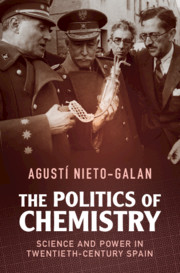
Agustí Nieto-Galan sostiene que la química del siglo XX fue profundamente política. Lejos de existir en una esfera pública distinta, para el autor el conocimiento químico se aplicó de tal manera que creó fuertes vínculos con proyectos industriales y militares, y generó rivalidades nacionales y esfuerzos internacionales, a la vez que dio forma a las condiciones de vida de millones de ciudadanos. Es en este marco general en el que Nieto-Galan analiza cómo a los químicos españoles se convirtieron en poderosos agentes ideológicos en diferentes contextos políticos del siglo XX -desde regímenes liberales hasta dictaduras-, y desvela su influencia en las redes científicas internacionales y su contribución en las feroces batallas ideológicas propias de dicha era de extremos. Por todo ello el autor argumenta que los discursos compartidos entre la química y el liberalismo sobre la guerra, el totalitarismo, la religión y la diplomacia, condujeron a avances en ambos campos.
The Dark Side of Molecules: Politics and Chemistry in the 20th century

“‘If You Tilt This Game, Will It Explode?’: The Politics of Nuclear Display at the New York Hall of Science, 1966-1973’”, Centaurus, 61(1), 2019, 33-50.
Este artículo analiza la política del New York Hall of Science de Nueva York desde finales de la década de los años 60 a principios de los años 70. El Hall of Science, que tuvo sus orígenes en la New York World’s Fair de 1964-65, contó con exhibiciones atómicas prácticas para niños y proyectó la creació de un importante Nuclear Science Center con el pleno apoyo de la Comisión de Energía Atómica. Este Nuclear Science Center habría sido la mayor muestra permanente sobre ciencia y tecnología nuclear en los Estados Unidos y habría incluido un Atomarium como la pieza más espectacular de la exhibición. En el Atomarium, los visitantes habrían podido ver cómo un reactor nuclear en funcionamiento se volvía crítico desde un teatro circular en forma de espiral, mientras que, mediante una ventana transparente plexiglás ubicada justo encima del núcleo, un guía disertaba sobre los usos pacíficos de energía Atómica. Este artículo analiza el Hall of Science como un espacio en el que se desarrollaron las tensiones entre el excepcionalismo nuclear y la banalización nuclear. En particular, el artículo explora cómo se pretendía que los sistemas de exhibición lúdicos e inmersivos desempeñaran un papel político en la modulación del miedo nuclear en un período en el que la promoción de una industria privada de energía nuclear por parte de la Comisión de Energía Atómica tuvo que hacer frente a crecientes resistencias ante la propaganción la posivilidad de desarrollo de plantas de energía nuclear.
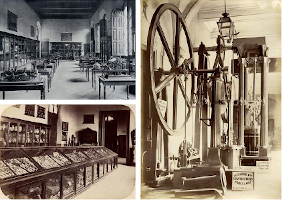
“The Failed Technology Museum of Catalonia: Engineers and the Politics of the Musealization of Technology in Barcelona (1929-1939)”, Nuncius, 34(1),2019, 128-154.
En marzo de 1937, por orden gubernamental se creaba el Museo Tecnológico de Cataluña, aunque nunca llegó a materializarse. ¿Por qué se percibió un museo nacional de tecnología como una necesidad urgente en plena Guerra Civil española? Este artículo explora cómo este intento fallido tuvo sus raíces en el interés político de larga duración de la comunidad de ingenieros por la musealización de la tecnología en Barcelona. Por un lado, analiza la tradición del despliegue tecnológico orientado en incrementar la productividad industrial y mejorar la educación técnica. Por otro lado, estudia los esfuerzos tecno-nacionalistas de los ingenieros para construir un pasado tecnológico respetable para la nación. Finalmente, explora cómo estos dos elementos se habrían articulado en el Museo de la Tecnología de Cataluña en buena medida gracias al papel clave que jugaron los profesionales de la ingeniería durante la Guerra Civil española.
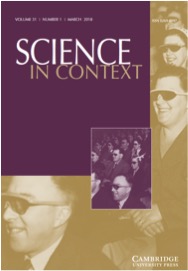
"The changing nature of modernization discourses in documentary films". Science in Context, 2018, 31(1): 61-83.
El régimen fascista de Franco en España (1939-1975) ofrece la posibilidad de explorar la compleja relación entre las prácticas de comunicación mediática y los procesos de producción, circulación y gestión del conocimiento. El régimen utilizó persistentemente el cine, y más tarde la televisión, como dispositivos de adoctrinamiento y disciplina. Por lo tanto, estos medios sirvieron para dar forma a la representación del régimen, que se basó en gran medida en la generación de actitudes positivas de adhesión a los gobernantes a través de la sumisión y la obediencia del pueblo a los expertos. Este artículo examina la naturaleza cambiante de los discursos y prácticas de la modernización, como elemento fundamental de las estrategias de propaganda del régimen, y como se retrata en los documentales producidos bajo su gobierno. La retórica de la modernización involucró un modelo explícito y deficitario de gestión del conocimiento, que pretendía legitimar las acciones y políticas del régimen en sus primeras décadas, como veremos con respecto a los documentales médicos coloniales producidos para el noticiero oficial de la década de los cuarenta. Sin embargo, el enfoque de tal retórica, a pesar de sus objetivos políticos perdurables, tuvo que abrirse de alguna manera a medida que cambiaba la relación entre expertos y no expertos, tanto en términos epistemológicos como prácticos, como en los documentales sobre la vida silvestre producidos para televisión en la década de 1970. la última década del régimen.
